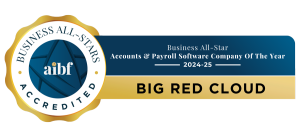Invoicing – no room for error
It might seem like the most straightforward of commercial documents, but not every invoice contains all the information it should – and when it comes to customers trying to justify late payment, an incorrect or incomplete invoice is an open goal for any business looking for an excuse not to pay on time.
It should go without saying that an invoice must include the sender’s company name and address, the date it was issued, the date on which the goods and/or services were supplied, and the total amount payable.
When invoices are submitted to an individual rather than an accounts department, it is important to check these contacts regularly in case they have moved on or changed job.
Return to sender?
The name and address of the company to whom the invoice is being sent should also be checked as even the slightest error or omission could necessitate resubmission of the invoice. Similarly, some firms will only accept an invoice once a purchase order has been raised so make sure to include the PO number on the invoice.
If you are charging VAT, include your VAT number at the top of the invoice and add a line detailing the total amount of VAT being charged.
Invoices should be submitted as PDF files to ensure the details cannot be amended or items removed by the recipient. If your accounting software does not have this facility, there are a number of free tools online that allow you to convert Word or other document types to PDF.
Trace and trace
Including a unique reference will make it easier to track the progress of the invoice from submission to payment. This can be as simple as the company name followed by the number of the invoice.
The summary description should provide enough detail to make it clear what the invoice is being raised for and breaking down the amount due for individual goods/services can also help ensure there is no dispute over what you are invoicing for.
It is a good idea to include contact details for payment queries. Many companies fail to provide a name and/or phone number for the person who raised the invoice in the event that the recipient wishes to query the details or amount.
Time to pay
Include the payment terms at the bottom of the invoice and make sure the terms are those agreed with the customer. If you offer standard terms this section of the invoice will not change, but some businesses may offer a discount for early payment or more favourable terms in exchange for larger contracts.
Users of a cloud-based accounting package like Big Red Cloud receive updates when invoices have not been paid within the agreed timeframe, making credit control easier to manage.
Some customers may still insist on paying by cheque, but you should encourage payment by bank transfer as this is cheaper and quicker. Make sure to include the IBAN and BIC codes required for receiving all types of payments including International.




